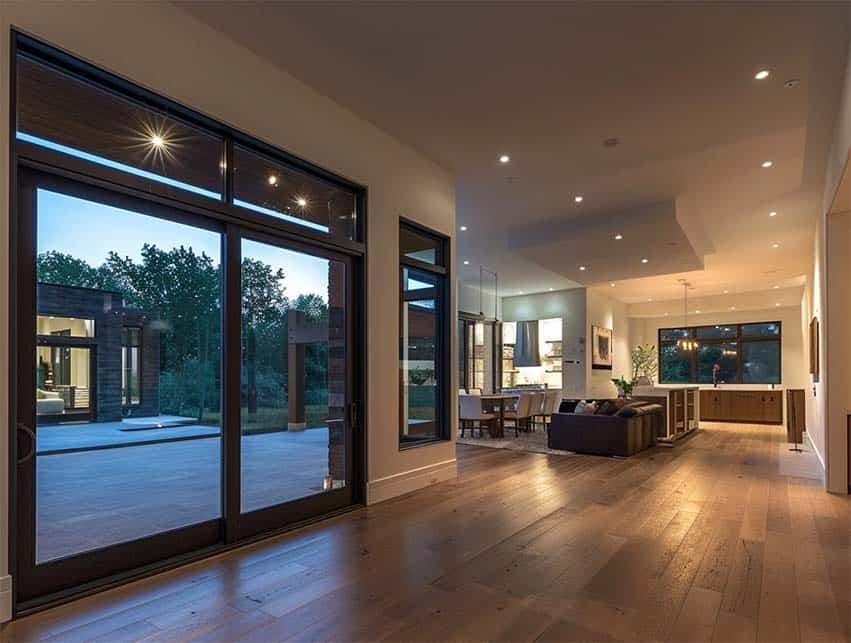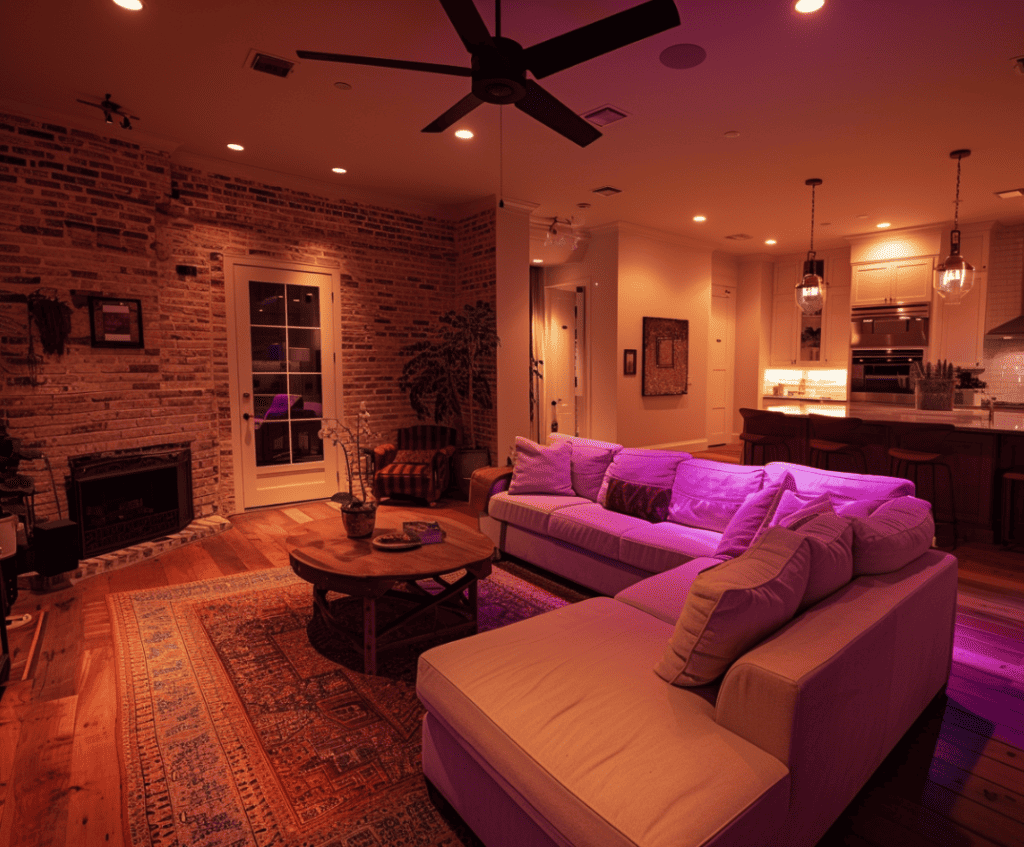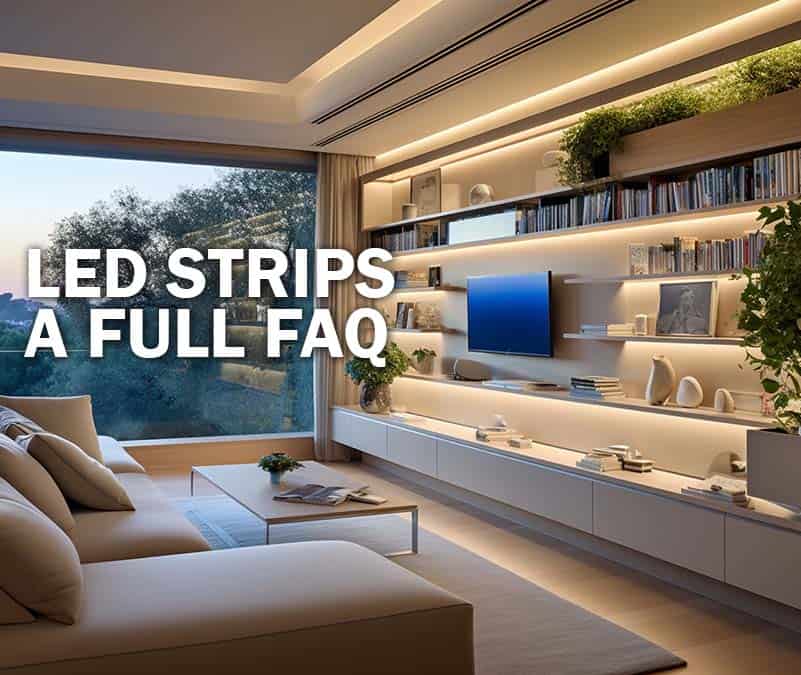LED Technology vs. the Rising Cost of Electricity

LED technology: a practical solution to a pressing problem
Is this the right time to switch to LED technology? Basically, in our opinion as professional licensed electricians in San Antonio, the current rise in electricity rates gives both homeowners and businesses very good reasons to stop buying legacy light bulbs and adopt LEDs all the way.
We discuss every day with homeowners and business owners and hear how terrible their electric bill has become. Additionally, winter is coming soon, and everybody knows the situation will get worse.
None of the factors explaining the increase in our utility bills has any immediate solution. We must all find ourselves the best way to deal with our own situation. Where can we save money?
We published another article about 10 easy tactics to save on electricity in our homes every day. It’s a good read: simple habits and changes that will push down our power usage. Here, we focus on LED technology and LED lighting.
Electricity rates won’t go down any time soon
Most economists attribute the current rise in gas prices and electricity rates to 3 main factors: (a) The consequences of the war in Ukraine on the market prices of commodities; (b) The threat of renewed inflation in the United States and other large western economies; and (c) The temporary effects of the transition to renewable energies.
At this instant, none of these factors has any immediate solution. Most likely, electricity rates will continue to rise. Yet, people need solutions with immediate effects to relieve the pressure on their household budget.
Even with federal incentives and tax breaks, many families don’t have the money to install solar panels. Also, it takes several months to get a system installed from contract to delivery. And in any case, solar panels are not as efficient in winter anyways, so this avenue is not a short-term solution to face the upcoming winter.
LED technology is more energy-efficient
We know that incandescent bulbs are not energy efficient. Why? About 90% of the electricity they receive turns into heat, not into light. Halogens are even less efficient. For the same reason, fluorescent tubes are much more energy efficient but their light and luminosity is not great. A house lit with fluorescent tubes looks very cold.
A compelling reason to transition
The transition to more efficient bulbs has been ongoing for the past decade. The most common light bulb, the Edison A-lamp, already has over a 90% installed stock of bulbs compliant with the statutory efficacy “backstop” (efficacy level of 45 lumens per watt). In addition, compliant light bulbs for specialty applications also represent the majority of the installed stock.
Undoubtedly, LEDs are becoming the lighting device of choice of many American households because of their energy efficiency and their brightness. according to the Center for Nanoscale Science at U-Penn, LED technology is 800% more efficient than incandescent bulbs. That’s 8 times more efficient!
There is a growing number of retail stores that adopt LED lighting vs. fluorescent tubes. In August 2020, the Department of Energy published a report on the growing adoption of LEDs in common lighting applications.
The DoE is interested in the energy savings recorded nationally. The report estimates the greatest energy savings in 2018 were made indoors with low-/high bay fixtures and A-type LED lamps with 100 million units installed.

Obviously, the two top reasons for retails stores and industrial facilities to switch to LEDs are (a) energy savings, and also (b) better lighting output: LEDs are simply more efficient in terms of light output (lumens/watt) than fluorescent tubes and bulbs.
LED technology: better longevity
Next reason why switching out of bulbs and tubes makes a lot of financial sense: the longevity of LEDs. LEDs have a lifespan that far exceeds that of traditional lighting solutions.
The average LED light can last up to 25,000 hours. The higher-end LEDs get ratings of up to 50,000 hours. By comparison, incandescent bulbs typically last about 1,000 hours, and compact fluorescents about 8,000 hours.
The lifespan of LEDs reduces the frequency of replacement. In other words, less trips to the store, and less ordering from online stores. All this amounts to convenience, time regained, and money savings.
LEDs transform our interiors
Aesthetics is yet another reason to prefer LEDs to fluorescent tubes and incandescent bulbs. With the commercial penetration of LED technology, lighting manufacturers have made full use of the small form factor of LEDs, creating thousands of fixtures to remodel our interiors.
Flush-mounted ceiling fixtures are a good example of this change. Where we used to have dome-shaped glass fixtures in our hallways and on the garage ceilings, we can now replace these ungainly warts with flush-mounted discs that give more light for less money.
LED strips are another great example of the form factor at work: they enable us to sculpt the light around focal points like a recessed ceiling or a decorative item, to make them pop out for a fraction of the cost of traditional sconces.
LED technology supports advanced lighting controls, color management, and dimmability too. By using LEDs at reduced brightness levels, we optimize our energy use and decrease our electricity costs. Dimmers can be use with incandescent bulbs too, but not with fluorescent tubes.
LED technology saves on air conditioning
Another part of the cost of incandescent bulbs and fluorescent tubes hides in the second-most significant electricity expense of U.S. homes: air conditioning.
According to a report by the EIE published in 2018, air conditioning accounted for 17% of electricity expenditures of U.S. households in 2015.
According to 2015 RECS report of the same government agency, 25% of all U.S. households use 40+ light bulbs in their homes.
Why does it matter?
Incandescent bulbs waste 90% of the electricity they consume in heating their filament. If you multiply the heat emitted by each bulb by 40, you get a picture of the heat created indoors by an electrical system entirely based on incandescent bulbs. The temperature difference is enough to cycle an air conditioner, adding to your electricity bill.
As mentioned above, fluorescent tubes and bulbs are more efficient than incandescent bulbs; yet they are 20%-30% less efficient than LEDs. This is mainly due to the energy loss of the ballasts, which also convert electricity into heat.
In passing, it could be argued that this conversion effect is beneficial in winter and in the northern states with their colder climate. That would be a funny but not serious argument in favor of legacy technologies. An air conditioning furnace is much more efficient at generating heat than a light bulb.
Bottom line: lighting up your home or office with LEDs will avoid this energy waste with a beneficial impact on your electricity usage.
Types of LED Bulbs
LEDs come in several different shapes for different types of uses, with specific benefits:
| SHAPE | BENEFITS |
| Standard A-Shape: The most common type of LED bulb, typically used for general-purpose lighting in homes and offices. | Versatility and wide compatibility with fixtures |
| Reflector Bulbs (R, BR): Designed to project light over a specific area. Great for track lighting and recessed fixtures. | Precision lighting with focused beams |
| Tube Lights (T): These are the direct replacements for fluorescent tubes. They come in various lengths and are well adapted for offices, garages, and commercial spaces. | Energy-efficient replacement for fluorescents with better light distribution |
| Candle Bulbs (C, CA): Designed for decorative fixtures like chandeliers | Aesthetic appeal combined with energy savings |
| Globe Bulbs (G): Round bulbs used in bathroom vanities and pendant lights. | Uniform light distribution |
| PAR Bulbs: Used in outdoor floodlights and spotlights. | Weather-resistant and durable for outdoor use |
Transitioning to LED technology
In the course of our residential electrician activity in San Antonio, we install complete or partial LED lighting systems both in homes and in offices. These systems can be very simple or very sophisticated.
The simplest change
The simplest energy saving gesture you can do is to replace a traditional light bulb by a Type-A LED bulb. Just doing this across your home will save you money over a year time. An Edison bulb typically lasts 15,000 life hours; an incandescent bulb, 1,000 hours. The average lumen life of regular LED bulb is 50,000 hours.
Even if the lifespan of an LED bulb decreases as a function of the quality of the voltage received, the possibility of overheating, the frequency at which they are switched on and off, and their exposure to heat and moisture, the same factors apply to traditional incandescent bulbs. The fact remains that simply switching to LED bulbs will immediately start saving you money.
Next-level change
Given that, the next-level change you can operate in your lighting system is to call a residential electrician like us to modify your lighting system to only use what you need and reduce the number of traditional light sources in your home.
Replacing an incandescent light bulb with a LED bulb reduces the energy usage but doesn’t reduce it as much as you could. When you flick off the switch of your ceiling lights, you will still turn on as many light bulbs as before.
As shown above, 25% of U.S. households use 40+ bulbs in their homes. Do you need 40+ bulbs when you switch to LED technology? Probably not. You will need less if we redesign your lighting system to avoid the waste.
Likewise, installing low-voltage systems will also help: they reduce your energy usage by limiting the voltage sent to the LED bulbs. You will get more brightness (lumens) than with incandescent bulbs, for much less wattage.
Even more sophistication
All in all, to extract the most value from your LED lighting system, you want to associate energy savings, convenience, and aesthetics. In effect, this is where experienced residential electricians as All Star Electric can bring even more appeal to your home.
When we redesign a lighting system, we work with the homeowners to identify the areas they want to brighten up and those they want to keep more intimate; the architectural features they want popping out, and the artworks they want to highlight.
Also, we collaborate to identify the colors most appropriate for each room, as LED allow for almost infinite color modulation. The contrast and modulation of light, colors, and shadows is what make the difference between average lighting systems and stunning lightshows.
Sophisticated lighting systems include presence and motion sensors that turn lights on and off based on circumstances. Moreover, homeowners can remote-control them for additional convenience.
Altogether, the range of possibilities of a redesigned LED lighting system is huge. We can calculate the electrical load of your home and give you a precise idea of the savings you would make each year by switching to a well-thought, well-designed lighting system.
About us
All Star Electric is a licensed residential electrician operating in San Antonio and its region for almost 30 years. We help transform homes with simple and sophisticated lighting systems. Also, All Star Electric assist homeowners in getting their homes up to code by repairing existing electrical systems and inspecting them for official or private purposes. We work indoors and outdoors on landscaping and hardscaping lighting systems.
Furthermore, All Star Electric is a member in good standing of the San Antonio Chamber of Commerce, and has maintained an A+ rating with the San Antonio Better Business Bureau since we became a member in 2009.
All in all, we invite you to call us at (210) 391-0274 for any project you have in mind, to help you design and install it, or to do the preparatory inspection and repair steps before you sell or buy a home in our region.
Additional resources
Try out our savings calculators to figure out what you would save by switching to LEDs
FAQ
According to research, LED technology is 800% more efficient than incandescent bulbs. Incandescent bulbs convert about 90% of the electricity they receive into heat, not light, making them highly inefficient.
Significantly, LED lights have a much longer lifespan than traditional lighting solutions. The average LED light can last up to 25,000 hours, with higher-end LEDs getting ratings of up to 50,000 hours. In contrast, incandescent bulbs typically last about 1,000 hours.
Incandescent bulbs waste 90% of the electricity they consume in heating, which can contribute to higher air conditioning costs. LED technology is more energy-efficient and generates less heat, thereby reducing the load on air conditioning systems.
LEDs come in various shapes for different applications, including:
1- Standard A-dhape: General-purpose lighting
2- Reflector bulbs (R, BR): Track lighting and recessed fixtures
3- Tube lights (T): Offices, garages, and commercial spaces
4- Candle style bulbs (C, CA): Decorative fixtures like chandeliers
5- Globe style bulbs (G): Bathroom vanities and pendant lights
6- PAR bulbs: Outdoor floodlights and spotlights
Yes, LED bulbs are often designed to be compatible with existing fixtures, making the transition to LED technology relatively straightforward. Many LED bulbs come in standard shapes and sizes, fitting seamlessly into your current setup. Some even offer “plug-and-play” convenience, requiring no additional modifications to your existing fixtures.
In short, LED technology offers a wide range of colors, brightness levels, and fixtures, significantly enhancing the aesthetics of interior spaces. Manufacturers have leveraged the small form factor of LEDs to create innovative fixtures that can transform the look and feel of your interiors.




























